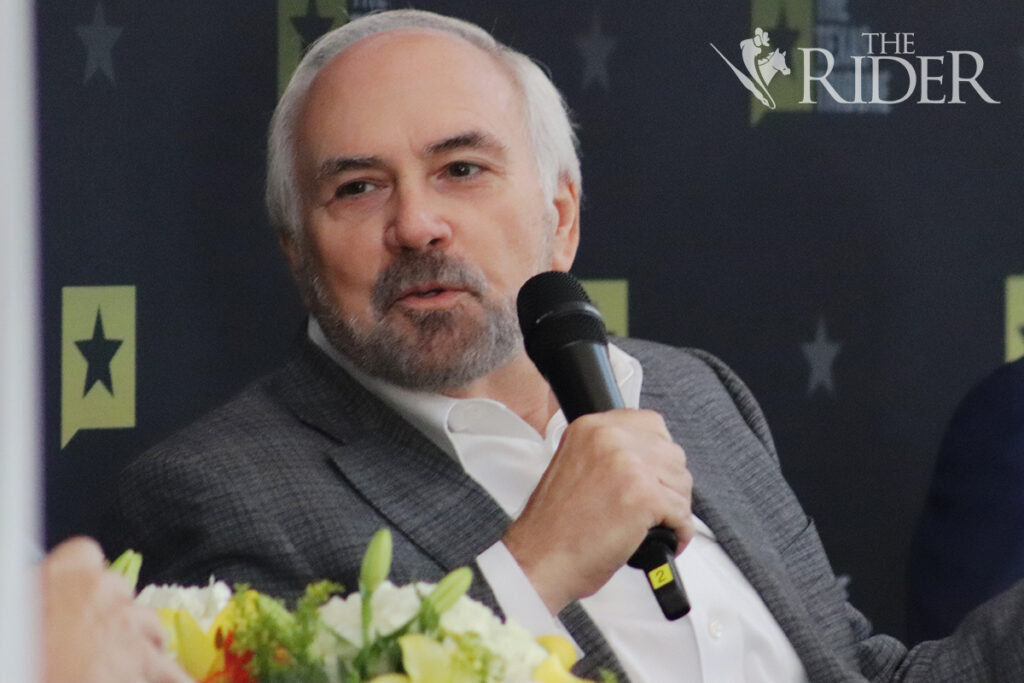
UTRGV President Guy Bailey and other distinguished guests spoke about issues facing Hispanic students, both within Texas and the university, during the “Serving Hispanic Students in Texas” event held last
Tuesday at the PlainsCapital Bank El Gran Salón on the Brownsville campus.
The event was a partnership with The Texas Tribune media organization and was moderated by Tribune CEO Evan Smith. On the stage with Bailey were Juliet V. García, former president of the University of Texas at Brownsville and current UTRGV communication professor, and Jacob Fraire, director of policy and strategy at the Diana Natalicio Institute for Hispanic Student Success at the University of Texas at
El Paso.
The panel discussed issues of university funding, the short and long-term goals for Hispanic students at UTRGV, concerns of mental health on campus, student housing and other topics.
One of the primary concerns were issues that disportionately affect Hispanic students.
“There [is a] lack of knowledge and lack of networks that exist predominantly among Hispanic Americans,” Fraire said. “Because they do not have someone in their [family] nucleus unit that has been to a college education.”
Bailey agreed.
“There is just an informal base of knowledge that [first-generation students] don’t have access to and that just makes your journey easier,” he said. “What [administration has] to do is provide support mechanisms for students to help them.”

For all three panelists, the solution was providing resources for disadvantaged students to be able to succeed. The solution needed to be found outside of
the classroom.
“The question is ‘What can I create on a campus that changes the environment that then propels [the students]
to that graduation goal?’” García asked.
Bailey gave an example of a practice that UTRGV implemented for the benefit of first-generation students.
“[Jobs] has been a big focus for us,” he said. “Having [the students] work on campus is building a community of support. That’s the single most important thing I think you can do for our students.”
The hope is that by providing these opportunities and support systems for students they will reach their ultimate goal: graduation.
“For many of our students, the degree itself is the key to the future, for themselves, for their families,” Bailey said. “Think about the level of poverty here.Think about what a college degree can do for students coming out of that.”
Regarding the long-term goals of the university for Hispanic students, Bailey said the “most important thing is for [students] to graduate and be successful in life.”
Issues that affect UTRGV as a Hipanic-serving institution were also discussed as part of the panel.
“I like to say we are a Hispanic institution,” Bailey said. “The vast majority, around 90% of our students are [Hispanic], so everything we do is really geared towards our population. That really differentiates us from a university serving maybe a 25 or 30% Hispanic population.”
García also spoke of the challenges affecting a majority of the Hispanic student population.
“Everything has been a fight, and just to remind us of that, it still is,” she said. “We are different in the fact that we have had neglect and lack of opportunity. We are catching up.”
Bailey addressed plans for the future of the institution.
“One of the goals that we also have is to produce the future faculty members, the future admission leaders [of UTRGV],” he said.
Bailey also spoke about the long-term goals for UTRGV “to be seen as the Valley’s university, and an asset to the Valley,” he said.
–Daniela Martinez Salazar contributed to this report.





